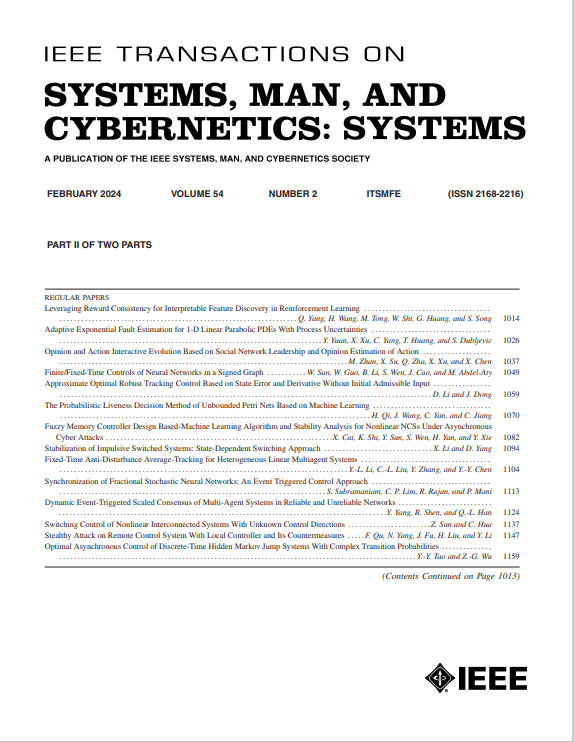Optimal Sequential-Parallel Test Strategy Generation Method for Complex Systems
IF 8.6
1区 计算机科学
Q1 AUTOMATION & CONTROL SYSTEMS
IEEE Transactions on Systems Man Cybernetics-Systems
Pub Date : 2025-04-28
DOI:10.1109/TSMC.2025.3560997
引用次数: 0
Abstract
One of the core tasks of design for testability (DFT) is to generate an optimal test strategy based on the test mode, to isolate faults quickly and accurately. There are currently two modes: 1) sequential test mode (STM) and 2) parallel test mode (PTM). For complex systems, limited testing resources are difficult to meet parallel test conditions, so STM is mostly used. The multisignal flow graph is a widely used model for generating optimal sequential test strategy (STS) in DFT. However, this STM-based model overlooks the possibility of conducting some tests in parallel, resulting in lengthy test time and greatly affecting the reliability and security of the systems. To solve this problem, an optimal sequential-parallel test strategy (SPTS) generation method is proposed. First, a new test mode of global sequential testing and local parallel testing is proposed to generalize the original model. Second, to overcome the combinatorial explosion caused by the new model, we approximate the discrete model to continuous and derive a probability heuristic function. Then, a neural network-intelligent algorithm structure is established to simplify the complex recursion of the heuristic function. Finally, this heuristic function is used to guide the generation of SPTS, which has a shorter test time than STS. Simulation results show that the reduction in time is related to the type and number of locally parallel tests, and reaches 39.5% in a real case.复杂系统的最优序并行测试策略生成方法
可测试性设计(DFT)的核心任务之一是根据测试模式生成最优测试策略,以快速准确地隔离故障。目前有两种模式:1)顺序测试模式(STM)和2)并行测试模式(PTM)。对于复杂系统,有限的测试资源难以满足并行测试条件,因此多采用STM。多信号流图是离散傅里叶变换中用于生成最优序列测试策略(STS)的一种广泛使用的模型。然而,这种基于stm的模型忽略了并行执行一些测试的可能性,从而导致测试时间过长,并极大地影响了系统的可靠性和安全性。为了解决这一问题,提出了一种最优序并行测试策略生成方法。首先,提出了一种全局顺序测试和局部并行测试的测试模型,对原模型进行了推广;其次,为了克服新模型引起的组合爆炸,我们将离散模型近似为连续模型,并推导出一个概率启发式函数。然后,建立了神经网络智能算法结构,简化了启发式函数的复杂递归。最后,利用该启发式函数指导SPTS的生成,SPTS的测试时间比STS短。仿真结果表明,所减少的时间与局部并行测试的类型和数量有关,在实际情况下可达到39.5%。
本文章由计算机程序翻译,如有差异,请以英文原文为准。
求助全文
约1分钟内获得全文
求助全文
来源期刊

IEEE Transactions on Systems Man Cybernetics-Systems
AUTOMATION & CONTROL SYSTEMS-COMPUTER SCIENCE, CYBERNETICS
CiteScore
18.50
自引率
11.50%
发文量
812
审稿时长
6 months
期刊介绍:
The IEEE Transactions on Systems, Man, and Cybernetics: Systems encompasses the fields of systems engineering, covering issue formulation, analysis, and modeling throughout the systems engineering lifecycle phases. It addresses decision-making, issue interpretation, systems management, processes, and various methods such as optimization, modeling, and simulation in the development and deployment of large systems.
 求助内容:
求助内容: 应助结果提醒方式:
应助结果提醒方式:


